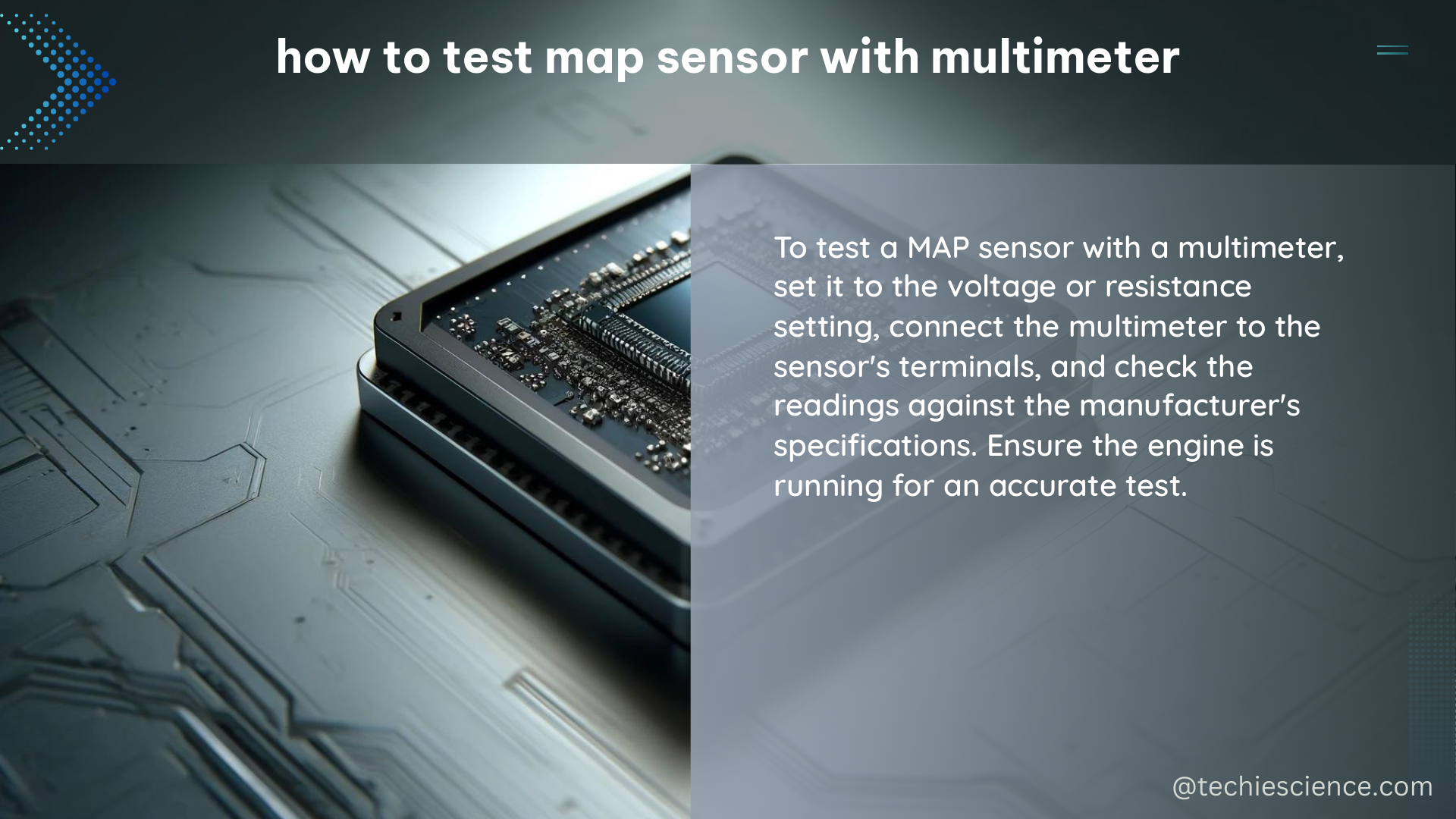The manifold absolute pressure (MAP) sensor is a crucial component in modern vehicle engines, responsible for providing the engine control module (ECM) with information about the engine’s intake manifold pressure. Accurately testing a MAP sensor is essential for diagnosing and troubleshooting engine performance issues. In this comprehensive guide, we’ll walk you through the step-by-step process of testing a MAP sensor using a multimeter, covering both circuit testing and sensor testing, along with the necessary technical specifications and a detailed DIY guide.
Circuit Testing
Understanding the Wiring Diagram
Before testing the MAP sensor circuit, it’s crucial to understand the wiring diagram. The wiring diagram will help you identify the sensor’s terminals, including the voltage supply, ground, and signal wire connections. This information is essential for accurately interpreting the test results.
Checking the Voltage Supply
Using a digital multimeter, measure the voltage supply to the MAP sensor. The voltage supply should be 5 volts (±0.5 volts) according to most manufacturers’ specifications. If the voltage is outside this range, it could indicate a problem with the power supply, such as a faulty wiring harness or a malfunctioning ECM.
Checking the Ground
Next, check the ground connection of the MAP sensor. The ground should read 0 volts on the multimeter. If the ground is not 0 volts, it could indicate a problem with the ground connection, such as a loose or corroded ground wire.
Checking the Resistance
Use the multimeter to measure the resistance of the signal wire from the MAP sensor to the ECM. The resistance should be within the manufacturer’s specified range, typically between 5 and 20 ohms. If the resistance is outside the specified range, it could indicate a problem with the wiring or the sensor itself.
Sensor Testing

Testing the Sensor with a Vacuum Pump
To test the operation of the MAP sensor, you’ll need a vacuum pump with adjustable vacuum levels. Disconnect the vacuum hose from the intake manifold and connect it to the vacuum pump. With the key on and the engine off, the voltage output from the MAP sensor should be around 4.5 volts. As you apply vacuum to the sensor, the voltage output should decrease. If the voltage does not decrease as expected, it could indicate a problem with the sensor.
Testing the Sensor with a Multimeter
You can also test the MAP sensor by measuring the voltage output at different manifold pressures. Start with the engine off and the vacuum hose disconnected, which should result in a voltage output of around 4.5 volts. Then, gradually increase the manifold pressure by applying vacuum with the pump. The voltage output should increase as the manifold pressure increases. If the voltage output is not within the manufacturer’s specified range, it could indicate a problem with the sensor.
Technical Specifications
The technical specifications for testing a MAP sensor with a multimeter include:
| Specification | Value |
|---|---|
| Voltage Supply | 5 volts (±0.5 volts) |
| Ground | 0 volts |
| Resistance | Within the manufacturer’s specifications (typically 5-20 ohms) |
| Vacuum Pump | Adjustable vacuum levels |
| Multimeter | Digital multimeter capable of measuring voltage and resistance |
DIY Guide
Follow these steps to test a MAP sensor with a multimeter:
- Locate the MAP Sensor: The MAP sensor is typically located on the intake manifold or near the throttle body.
- Understand the Wiring Diagram: Before testing the circuit, familiarize yourself with the wiring diagram of the MAP sensor.
- Check the Voltage Supply: Use a multimeter to measure the voltage supply to the MAP sensor. It should be 5 volts (±0.5 volts).
- Check the Ground: Measure the ground connection of the MAP sensor. It should read 0 volts.
- Check the Resistance: Measure the resistance of the signal wire from the sensor to the ECM. It should be within the manufacturer’s specified range.
- Test the Sensor with a Vacuum Pump: Disconnect the vacuum hose from the intake manifold and connect it to a vacuum pump. With the key on and engine off, the voltage should be around 4.5 volts. Apply vacuum and observe the voltage decrease.
- Test the Sensor with a Multimeter: Measure the voltage output at different manifold pressures. The voltage should increase as the pressure increases, within the manufacturer’s specifications.
By following these steps, you can effectively test the MAP sensor and diagnose any issues with the sensor or its associated wiring and connections.
Reference:

The lambdageeks.com Core SME Team is a group of experienced subject matter experts from diverse scientific and technical fields including Physics, Chemistry, Technology,Electronics & Electrical Engineering, Automotive, Mechanical Engineering. Our team collaborates to create high-quality, well-researched articles on a wide range of science and technology topics for the lambdageeks.com website.
All Our Senior SME are having more than 7 Years of experience in the respective fields . They are either Working Industry Professionals or assocaited With different Universities. Refer Our Authors Page to get to know About our Core SMEs.